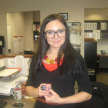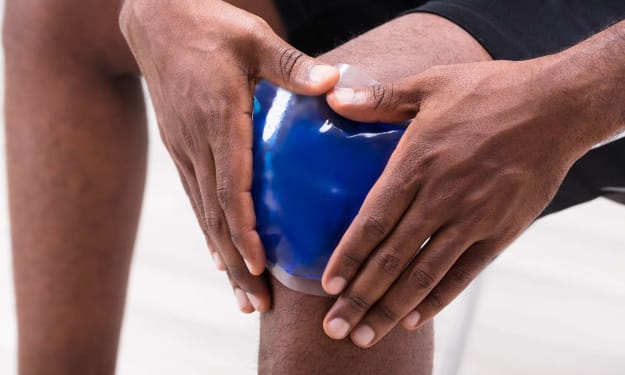Different Types of Retainers: How to Choose
The day your braces are removed is cause for celebration! But you're not finished yet. Once your teeth have been repositioned, you will require a retainer to keep them in place. There are various sorts of retainers available.

The day your braces are removed is cause for celebration! But you're not finished yet. Once your teeth have been repositioned, you will require a retainer to keep them in place. There are various sorts of retainers available.
Permanent retainers, Hawley retainers, and clear plastic retainers are the three most prevalent forms of retainers used in modern orthodontic treatment.
Permanent Retainers
Permanent retainers are thin metal wires that are glued behind your teeth. They are commonly utilized on the bottom front teeth. They're held together using the same cement that's utilized to secure your brackets.
Pros
You don't have to think about wearing a permanent retainer. It will not be lost, and if it is damaged, it is inexpensive to repair.
Because it is discreetly attached to the inside of your teeth, most people do not know you are wearing a permanent retainer.
Permanent retainers are also more comfortable for some people. There are no bits to get in the way of your conversation or chewing, and you won't even notice they're there most of the time.
Cons
Permanent retainers remain in your mouth at all times, including during eating, brushing, and flossing. They can make oral hygiene difficult because they don't come out.
Food particles can become entangled in your retainer wire, and if you don't brush after meals, this can contribute to plaque accumulation and gum disease.
Flossing with a permanent retainer is similar to flossing while wearing braces. A floss threader is required for a thorough cleaning.
Because the wire is thin and flexible, even with a permanent retainer, your teeth may shift somewhat. However, any movement will be minor.
Hawley Retainers
When you think of retainers, you generally think of Hawley retainers. They're composed of acrylic that's been sculpted to fit inside your mouth, and metal wires wrap around your teeth to keep them in place. They can be removed, unlike bonded retainers.
Pros
Hawley retainers can last a long time if properly cared for, and because they're fairly sturdy, care isn't difficult.
These retainers are available in several colors, including sparkling tints, allowing individuals who prefer personalization to be as fashionable as desired. Because acrylic does not discolor or scratch readily, you will most likely have the same retainer for many years.
It's also convenient to be able to remove your retainer for meals and oral hygiene. You can clean your Hawley retainer using a toothbrush and toothpaste or, if you prefer, a denture cleaning.
Cons
There are certain disadvantages to being able to remove your retainer. Dogs enjoy chewing on Hawley retainers, which can cost between $150 and $300 per retainer.
Because the metal wire rests in front of your teeth, this type of retainer is visible in your mouth. You'll probably just need to wear it when sleeping eventually, but if you're looking forward to a wireless grin after your braces come off, having to wear your retainer all the time may be a little frustrating.
Feeling your retainer in your mouth will most likely take some getting used to, and you may speak differently at first. Some people find that wearing a Hawley retainer causes them to generate more saliva.
A retainer that hasn't been properly cleaned might harbor bacteria colonies, which are unpleasant to have in your mouth. To keep everything clean and healthy, make sure you follow all of your orthodontist's directions.
Clear Plastic Retainers
Clear plastic retainers, often known as Essix retainers, resemble Invisalign. They are thin, transparent trays that fit firmly over your teeth to keep them from moving.
Pros
Because this form of retainer is fitted to each tooth, it is the most effective at preventing movement. This is becoming a popular option among the various types of retainers.
Nobody will notice you're using an Essix retainer because the thin plastic is practically invisible. Some people prefer them because they are more comfy.
Clear retainers have the same removability advantages as Hawley retainers - they come out for eating and cleaning, and you may remove them for things like pictures if you like.
Cons
Clear plastic retainers are not used by all orthodontists because the thin layer of plastic between your teeth can subtly modify your bite. It depends on your specific situation whether they are a good solution.
Essix retainers are significantly more expensive and have a shorter lifespan than other types of retainers. A Hawley retainer is a better solution for persons who grind their teeth, play contact sports, or are a little reckless with the device when it's being removed.
Using toothpaste on a clear plastic retainer can scratch it, making maintenance a little more difficult. Even with good care, you'll need a new retainer every year due to normal wear and tear.
Conclusion
Wear your retainer exactly as directed by your orthodontist. You don't want to be one of those people who forget about their retainer for months on end, only to find out one night that it no longer fits.
Use your retainer to ensure that all of your hard work in achieving the smile you desire does not go to waste.
About the Creator
Amelia Grant
I am journalist, and blogger.






Comments
There are no comments for this story
Be the first to respond and start the conversation.